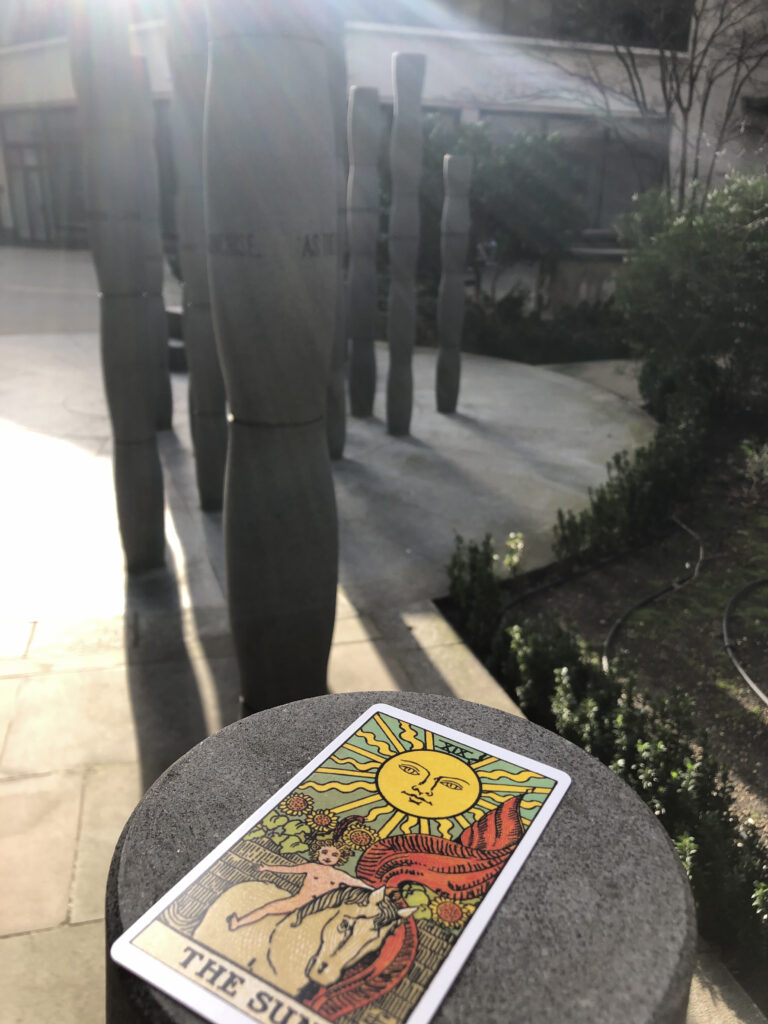More about the Tarot
A little history
Tarot cards arrived in Europe the middle ages, along with all other early playing cards. And the game tarot, a bit like bridge, is still played in many countries. It started off as just an extra suit of trump cards.
But these trump cards really got things going. The first decks were handmade in 15th century Italy; small, ornate paintings of archetypal characters. Death, The Fool and The Hanged Man were all there. If chess was the game of war and backgammon a race, then tarot was the game of life.
And from the very beginning, the cards’ alternative use was also popular. The pictures became prompts for storytelling and divination. Predicting whether you’d marry well seems to have been a big curiosity.
Over the years the cards’ meanings grew deeper. By the late 1700s, a history tracing them back to Ancient Egypt had been concocted. And then came the first occult reference guide. Soon Robespierre, Empress Josephine and Tsar Alexander I were all having their cards read.
The Victorian’s appetite for spirituality brought with it new enthusiasm for the tarot. They added ideas about the Kabbalah and Hermeticism. Then in 1909, the famous Rider Waite Smith deck harnessed centuries of esoteric meaning in a comprehensive set of images. The challenges and choices of life’s journey were woven into the deck.
In the early C20th the tarot’s stories were interpreted in the light of Jung’s collective unconsciousness and his myths and archetypes. By the 1960’s Eden Grey’s Complete Guide to the Tarot led to a new wave of popularity and in the 1970s the idea of individual interpretation marked the transition to mainstream awareness. Today, embraced by new age thinking and sustained by the philosophy of self-help, the tarot is enjoying yet another renaissance. It incorporates psychology and behavioural science and has been developed to enhance personality systems such as Myers Briggs and the enneagram.
And there’s even of tarot for dogs. It still hasn’t lost its sense of fun.

So how does the tarot work?
Search me. There are as many views about how the Tarot works as there are people who use them.
It could be that they tap into a great cosmic or spiritual power. Perhaps they tap into Jung’s collective unconscious. Or is it actually the collective consciousness (the value systems that we all share) that unlocks their meaning? The tarot does seem to draw on popular archetypes: our common understanding of values, morality, passions and desires, for example.
It could be that they’re just some pretty pictures.
One thing is sure, the tarot definitely isn’t validated by science (so it’s up there with economics, then…) And, just to get this straight, the way we use them has nothing to do with mysticism. That’s not what this is about. There isn’t a psychic bone in my body.
The important thing is that the process does produce interesting results. Perhaps it’s as a mouthpiece for something that’s remained unspoken, or wasn’t framed quite right? Maybe it’s a projection of the subconscious? Or maybe it just creates an interesting new mash-up? A random collision and some new energy?
We shouldn’t underestimate the power of a different thinking system. Especially one that’s fun. And, even if all it does is to create a shared new state of mind, or to break us out of a rut, then surely that’s worth a go?
Ultimately, does it matter how it does it? Just as long as it does.
… the only way to decide is to try it yourself.
